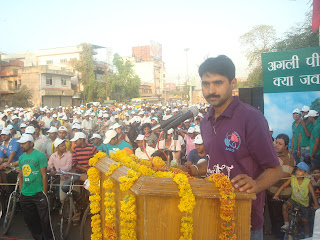RAMKISHOR UPADHYAY-VITM GWL., CHEMISTRY IMP.QUESTIONS ,BE-101
UPADHYAYSIR –VITM GWALIOR RAM KISHOR
HOD-DEPT. OF ENGG.CHEMISTRY BE-101 , IMP. QUESTIONS
VITM –GWL.MP
UNIT-1
WATER TREATEMENT
QUS.-1 What do you mean by Hard water? Explain main types of hardness.
OR
Define carbonated and non-carbonated Hardness of water.
QUS.-2 Distinguish between hard water and soft water.
QUS.-3 Define sludge and scale with three advantages. What is the difference between them?
QUS.-4 Write short notes on:-
1) Ion exchange process
2) Phosphate conditioning
3) Carbonate conditioning
4) Boiler corrosion
QUS.-5 Explain various units of hardness and show their relation also.
QUS.-6 What is boiler corrosion? State its significant.
QUS.-7 Give details of zeolite process of softening of hard water.
QUS.-8 Explain lime-soda process with types and reactions.
QUS.-9 What do you mean by caustic embrittlement? How can this be prevented?
QUS.-10 Numericals from book and VITM CLASS-NOTES-Upadhyaysir
UNIT -2
Fuel and combustion
1.) What do you mean by fuel? Give main types of fuels with example.
2.) Explain proximate analysis of coal? How it is carried out?
3.) How GROSS calorific value of a solid fuel? Determine by Bomb calorie meter give its principle also.
4.) Write short note on—
a} Gross calorific value.
b} Net calorific value.
c} Metallurgical coke.
5.) What is knocking? Define octane and cetane number.
6.) Describe in brief the metallurgical coal by Otto Hoffman’s oven method.
7.) Discuss Beehive oven method for manufactures of coke.
8.) Write short note on—Cracking and ultimate analysis of coal.
9.) What is carbonization of coal? Give main types of carbonization of coal.
10.) NUMERICALS from book and VITM CLASS-NOTES.
UNIT -3
LUBRICANTS,CEMENTS AND REFRACTORIES:
1. Define the term lubricants, mention their important functions. and Discuss the classification of lubricants with examples.
2. Write short note on:
a) Cloud and pore point. b) Flash and fire point..
c) Aniline point D) Flash and fire points E) viscosity index F) Saponification number G) Carbon residue
3. Draw neat and labelled diagram of determination of viscosity of lubricants by redwood viscometer.
4. Discuss in breif lubrication, its mechanism and significance.
5. Give details of greases and solid lubricants.
6. What are Refractories ? explain main types of refractories and uses.
7. Write short note on:
a) Refractoriness.
b) Porosity.
c) Pyrometric cones test (segar cones test)
d) thermal spalling.
e) RUL (refractory under load)
8. Explain the manufacturing of cements in details, with chemical reaction.
9. Write the chemistry of setting and hardening of cement.
10. What do you mean by portland cement give its composition and uses.
Unit-4
Polymer
1.What do you mean by polymer? write claddification of polymers.
2.Diffrence between thermoplastic and thermosetting?
3.Diffrence between addition and condensation polymerization?
4.What do you mean by natural rubber? Expalin vulcanization of rubber.
5.Explain mechanism of addition polymerization(free radical, cationic and anionic mechanism).
6.Give preparation , properties and uses of Nylon6, Nylon66, Buna-N, Buna-S, Bakelite,Butaile, rubber PMMA.
7.Write short note on nytride rubber,neoprine HDP & LDP
8.Write short noye on PVC, PVA, SVR, PVM, Teryline
Or
Write short note any four(1) PVC (2) Poly styrene (3) Plexiglass (4) Decron (5) Natural rubber(6) Teflon (7) Buna-S (8) Buna – N (9) Neopren (10)PU&PVA (11) Glyptal (12) Bakelite (13) Silicon resine (14)PMMA,Thiocole and polyurethane rubber.
9.Discuse the main type of polymer on the way half on structure.
10. Discuse the main type of polymer on the way half inter moleculer force.
UNIT 5
INSTRUMENTAL TECHNIQUES IN CHEMICAL ANALYSIS
Ques.-1 Write short notes on BOD & COD.
Ques.-2 . Alkalinity of water cannot be due to the simultaneous presence of OH– , CO32– , HCO3– ions.
Ques.-3 What is the principle of EDTA titration? Briefly discuss the estimation of hardness of water by EDTA method.
Ques.-4 Give the definition , instrumentation and applications of NMR.
Ques.-5 Give the definition , instrumentation and applications of infrared Spectroscopy
Ques.-6 Give the definition , instrumentation and applications of ultraviolet Spectroscopy
Que.-7 Give details of electronic transition.
Ques.-8 Explain Beer’s-Lambert’s law.
Ques.-9 Write short notes on:
1) Shielding & De-shielding
2) Chemical shift, spin-spin coupling, calorimetry, Gas-chromatography
3) Colorimetery 4)Spin Spin coupling
Ques.-10 Explain Gas-chromatography . With applicatins.
Ques.-11. Numericals from the book and vitm –class notes
Prof.RamKishor Upadhyay
HOD-Engg.Chemistry
VITM-Gwl.
9425456639


Thanks sir
ReplyDelete